
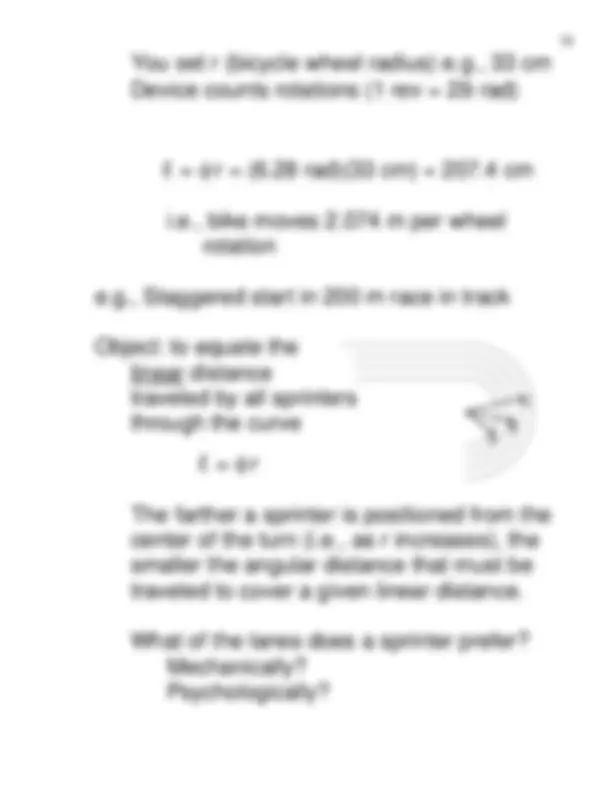
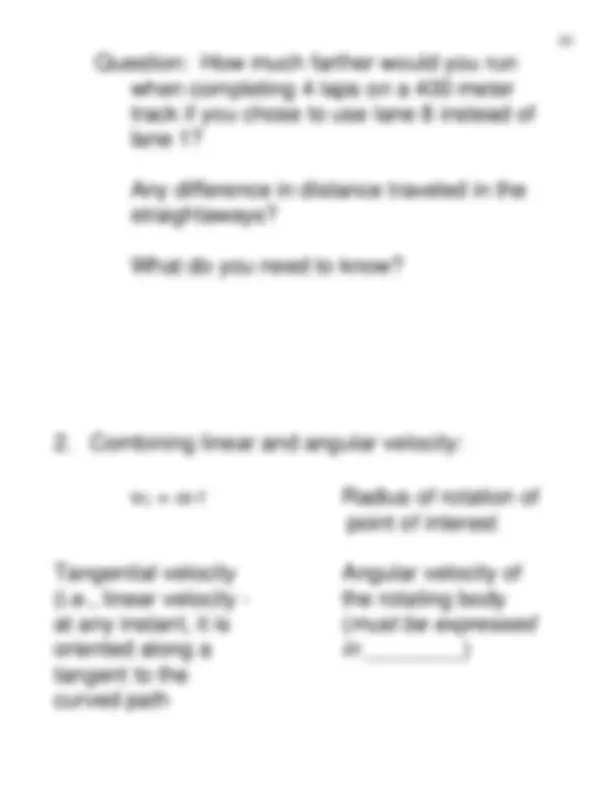
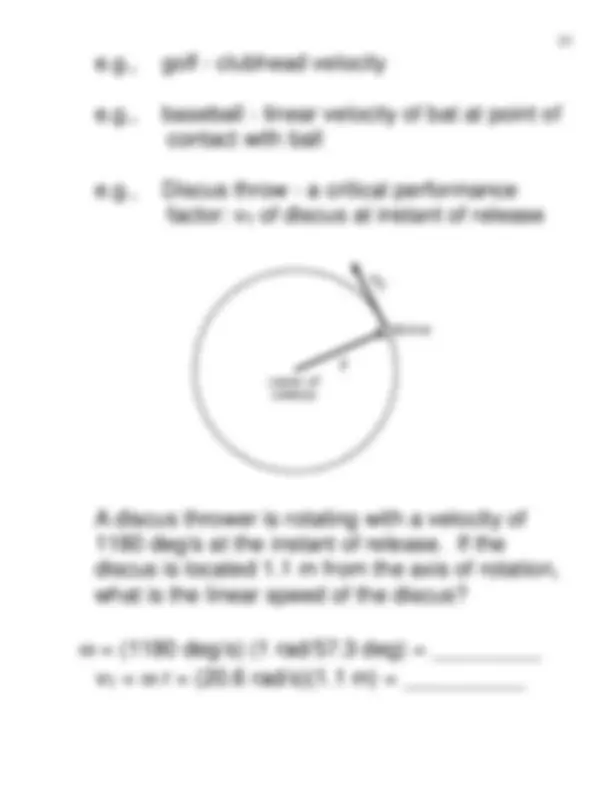
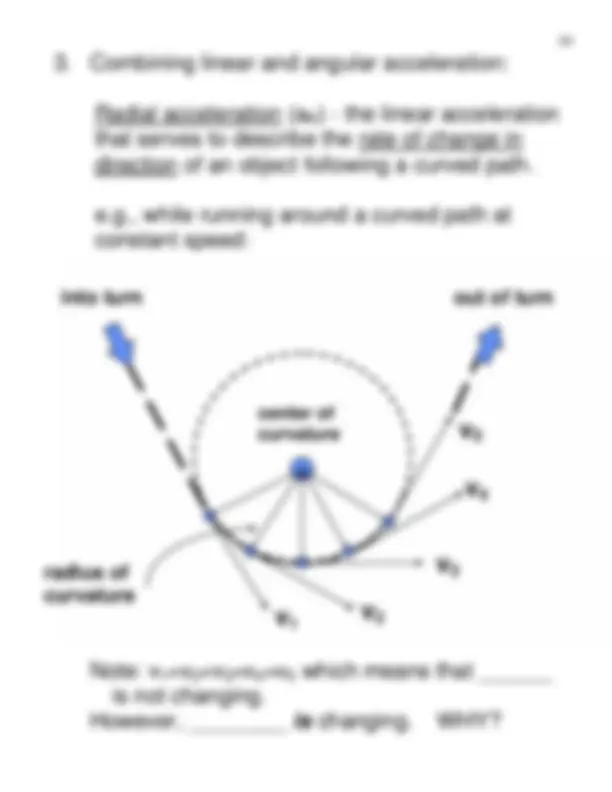
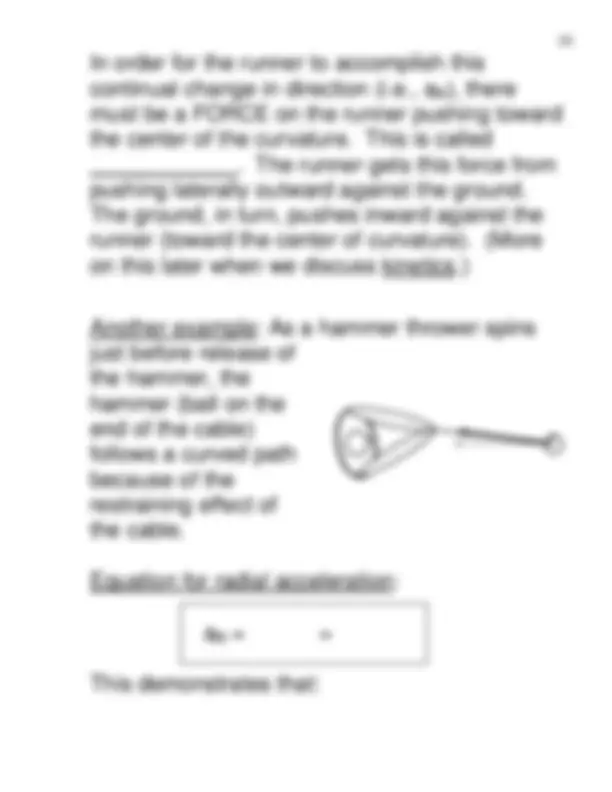
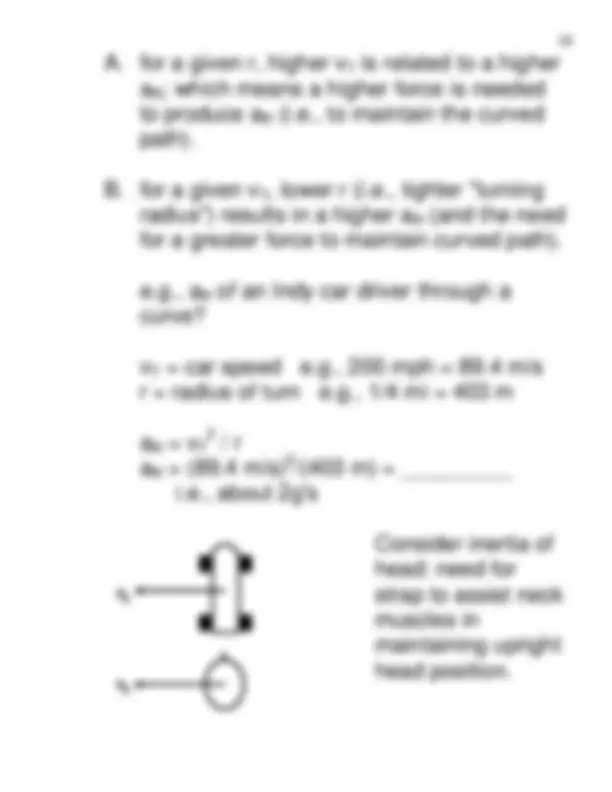
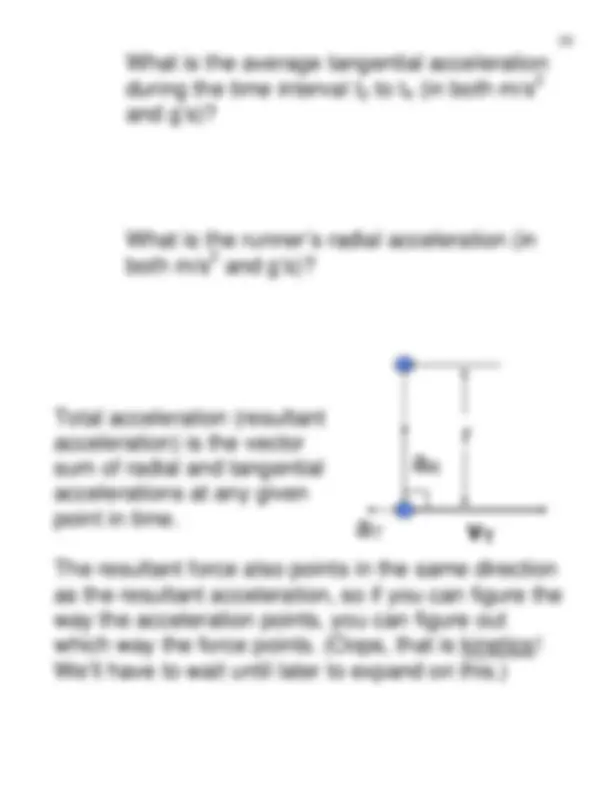


Study with the several resources on Docsity

Earn points by helping other students or get them with a premium plan


Prepare for your exams
Study with the several resources on Docsity

Earn points to download
Earn points by helping other students or get them with a premium plan
Community
Ask the community for help and clear up your study doubts
Discover the best universities in your country according to Docsity users
Free resources
Download our free guides on studying techniques, anxiety management strategies, and thesis advice from Docsity tutors
The relationship between linear and angular motion, focusing on how segment rotations produce linear motion and the mathematical relationships between linear and angular distance, velocity, and acceleration. It includes examples and problem-solving exercises.
What you will learn
Typology: Lecture notes
1 / 13

This page cannot be seen from the preview
Don't miss anything!








Linear and Angular Kinematics (continued) 17
A very important feature of human motion... Segment rotations combine to produce linear motion of the whole body or of a specific point on a body segment or implement (e.g., a distal location on the segment or implement)
e.g., running... coordinated joint rotations result in translation of the entire body e.g., softball (underhand) pitch... goal is to generate high linear velocity of the ball at release e.g., hitting a golf ball... goal is to maximize clubhead speed at impact
Key concept: The motion of any point on a rotating body (e.g., bicycle wheel) can be described in linear terms (i.e., curvilinear motion).
Key information: axis of rotation, location of point of interest relative to axis.
r
Mathematical Relationships between Linear and Angular Motion
interest is located from the axis of rotation: i.e., "radius of rotation"
Linear distance Angular distance through that the point of which the rotating object interest travels travels
for this expression to be valid!
e.g., bicycling electronic odometer
Device effectively measures distance ____ per wheel rotation for a point on the outer edge of the tire...
Question: How much farther would you run when completing 4 laps on a 400 meter track if you chose to use lane 8 instead of lane 1?
Any difference in distance traveled in the straightaways?
What do you need to know?
point of interest
Tangential velocity Angular velocity of (i.e., linear velocity - the rotating body at any instant, it is ( must be expressed oriented along a _in _________ ) tangent to the curved path
r
vT
discus
center of rotation
e.g., golf - clubhead velocity
e.g., baseball - linear velocity of bat at point of contact with ball
e.g., Discus throw - a critical performance factor: v (^) T of discus at instant of release
A discus thrower is rotating with a velocity of 1180 deg/s at the instant of release. If the discus is located 1.1 m from the axis of rotation, what is the linear speed of the discus?
In many tasks, an important biomechanical goal is to ________ v (^) T (i.e., the linear velocity of a point located distally on a rotating body)... e.g., golf clubhead velocity, the ball in throwing for maximum speed or distance
Theoretically, v (^) T can be increased if...
Problem: It is difficult for an athlete to maintain
e.g., it is harder to maintain an object's rotation when its mass is distributed farther from the axis. (A full explanation of this will have to wait until we talk about angular _______.)
v 1 v^2
v (^3)
v (^4)
v (^5)
into turn out of turn
center of curvature
radius of curvature
Radial acceleration (aR ) - the linear acceleration that serves to describe the rate of change in direction of an object following a curved path.
e.g., while running around a curved path at constant speed:
Note: v 1 =v 2 =v 3 =v 4 =v 5 which means that ______ is not changing. However, ________ is changing. WHY?
A. for a given r, higher v (^) T is related to a higher aR ; which means a higher force is needed to produce a (^) R (i.e., to maintain the curved path).
B. for a given v (^) T , lower r (i.e., tighter "turning radius") results in a higher a (^) R (and the need for a greater force to maintain curved path).
e.g., aR of an Indy car driver through a curve?
v (^) T = car speed e.g., 200 mph = 89.4 m/s r = radius of turn e.g., 1/4 mi = 403 m
aR = vT^2 / r aR = (89.4 m/s)^2 /(403 m) = _________ i.e., about 2g's
Consider inertia of head: need for strap to assist neck muscles in maintaining upright head position.
a
aR
R
Tangential acceleration (aT ) - the linear acceleration that serves to describe the rate of change in magnitude of tangential velocity (i.e., the rate at which one is speeding up or slowing down).
Equations for tangential acceleration:
(1) aT = =
(2) aT = (Watch your units! Why?)
e.g., goal of a hammer thrower's prerelease rotations is to increase the hammer's linear speed.
What forces are applied to a hammer during the body rotations prior to release?
What is the average tangential acceleration during the time interval t 2 to t 4 (in both m/s^2 and g’s)?
What is the runner’s radial acceleration (in both m/s^2 and g’s)?
Total acceleration (resultant acceleration) is the vector sum of radial and tangential accelerations at any given point in time.
The resultant force also points in the same direction as the resultant acceleration, so if you can figure the way the acceleration points, you can figure out which way the force points. (Oops, that is kinetics! We’ll have to wait until later to expand on this.)